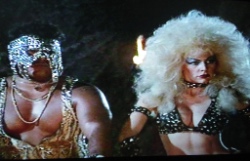
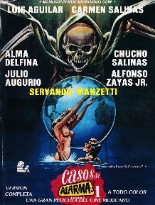 The sensational Mexican newsmagazine ¡Alarma! is legendary for the graphic violence and tremendous sex contained within in its bestselling pages, with images of severed heads and mutilated corpses right on the cover, usually in blazing full color. I’ve got a couple of old copies if you really want to take a look at one.
The sensational Mexican newsmagazine ¡Alarma! is legendary for the graphic violence and tremendous sex contained within in its bestselling pages, with images of severed heads and mutilated corpses right on the cover, usually in blazing full color. I’ve got a couple of old copies if you really want to take a look at one.
In 1986, the fotonovela titled Casos de ¡Alarma! made it to the big (well, big in Mexico) screen in a film subtitled SIDA or, as it’s more popularly known in America, AIDS. Of course, it’s a highly melodramatic and deeply pungent story that, even for the time, is hilariously uninformed about the disease. But, I guess if you’re watching a film from the makers of ¡Alarma!, you’re really not looking for integridad periodística.
 A moody young man named Rodolfo (Servando Manzetti) comes to a small rural town, with uncomfortable flashbacks to an apparent murder as he looks out the window wistfully on the bus. Seems he’s confused about his sexualidad ever since a kid (who resembled a young John Candy) molested him at boarding school, leading to a life of being taken advantage of by old men and, for the most part, he didn’t really hate it.
A moody young man named Rodolfo (Servando Manzetti) comes to a small rural town, with uncomfortable flashbacks to an apparent murder as he looks out the window wistfully on the bus. Seems he’s confused about his sexualidad ever since a kid (who resembled a young John Candy) molested him at boarding school, leading to a life of being taken advantage of by old men and, for the most part, he didn’t really hate it.
However, when he meets atractiva clothes-washer Carolina (Alma Delfina), it energizes the fuerza de vida machista pura inside him, but, consequently, he gives her SIDA. Then, despite the romantic ranchera musical numbers by the mayor’s son, Ausencio (Julio Aldama), to her, he vengefully sexually assaults Carolina and that gives him SIDA, too, which apparently has a gestation period of three months before you die a horrible death on a tractor.
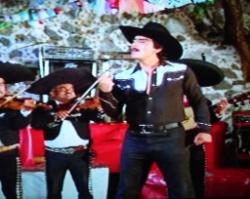 At two hours, the thing is surprisingly filled with dumb comedy, tired gay stereotypes and plenty of punishing filler. Regardless, it’s still very much like the death-obsessed magazine, from a bordello of breast-heaving prostitutas to the bloody gundown of Carolina from an angry padre; this first volume of Casos de ¡Alarma! is remarkably trashy and fully exploitative of the absolute temor surrounding SIDA at the time. —Louis Fowler
At two hours, the thing is surprisingly filled with dumb comedy, tired gay stereotypes and plenty of punishing filler. Regardless, it’s still very much like the death-obsessed magazine, from a bordello of breast-heaving prostitutas to the bloody gundown of Carolina from an angry padre; this first volume of Casos de ¡Alarma! is remarkably trashy and fully exploitative of the absolute temor surrounding SIDA at the time. —Louis Fowler

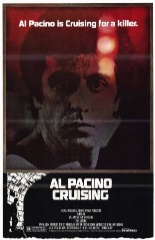
 Undoubtedly one of the most controversial films ever made, William Friedkin’s provocative tale of a homosexual killer on the loose in the sultry sexual playground of New York City in the 1980s is constantly being re-evaluated and reinterpreted through far more educated eyes than mine, but time has aged it well enough for me to at least admit that it’s an incomprehensible serial-killer flick that you just can’t look away from.
Undoubtedly one of the most controversial films ever made, William Friedkin’s provocative tale of a homosexual killer on the loose in the sultry sexual playground of New York City in the 1980s is constantly being re-evaluated and reinterpreted through far more educated eyes than mine, but time has aged it well enough for me to at least admit that it’s an incomprehensible serial-killer flick that you just can’t look away from.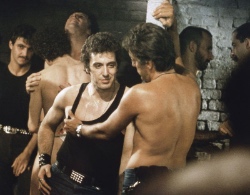

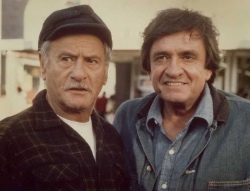

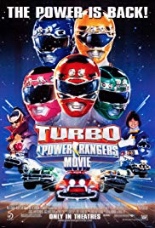
 The intergalactic pirate Divatox — whose name kinda sounds like a feminine hygiene product of some sort — is chasing a little person dressed in an ill-fitting troll costume through the woods on a swirling green planet; back here on Earth, however, a young kid named Justin is feeling a little blue because his mom is dead. It doesn’t help when a random Power Ranger, right in the middle of a training sesh, spin-kicks himself right out of the ring and into a broken back. Ouch!
The intergalactic pirate Divatox — whose name kinda sounds like a feminine hygiene product of some sort — is chasing a little person dressed in an ill-fitting troll costume through the woods on a swirling green planet; back here on Earth, however, a young kid named Justin is feeling a little blue because his mom is dead. It doesn’t help when a random Power Ranger, right in the middle of a training sesh, spin-kicks himself right out of the ring and into a broken back. Ouch!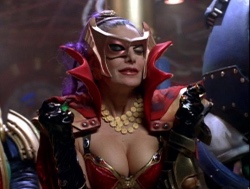
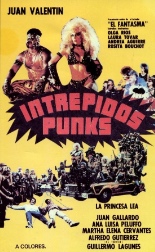
 With a title that translates to
With a title that translates to 